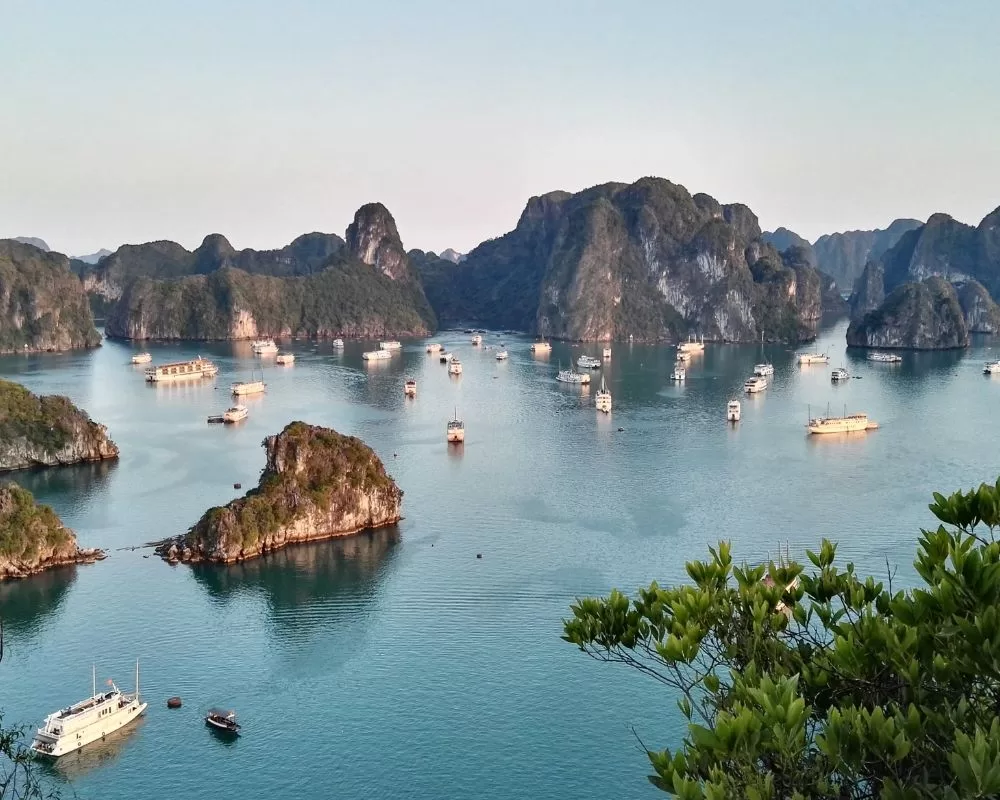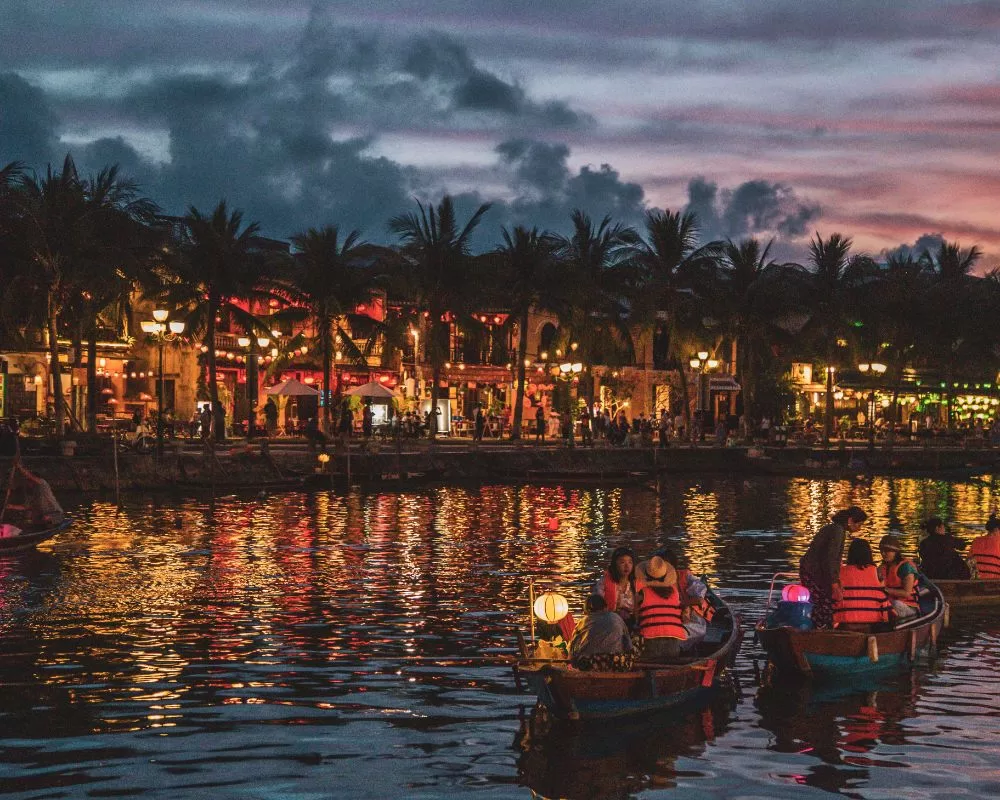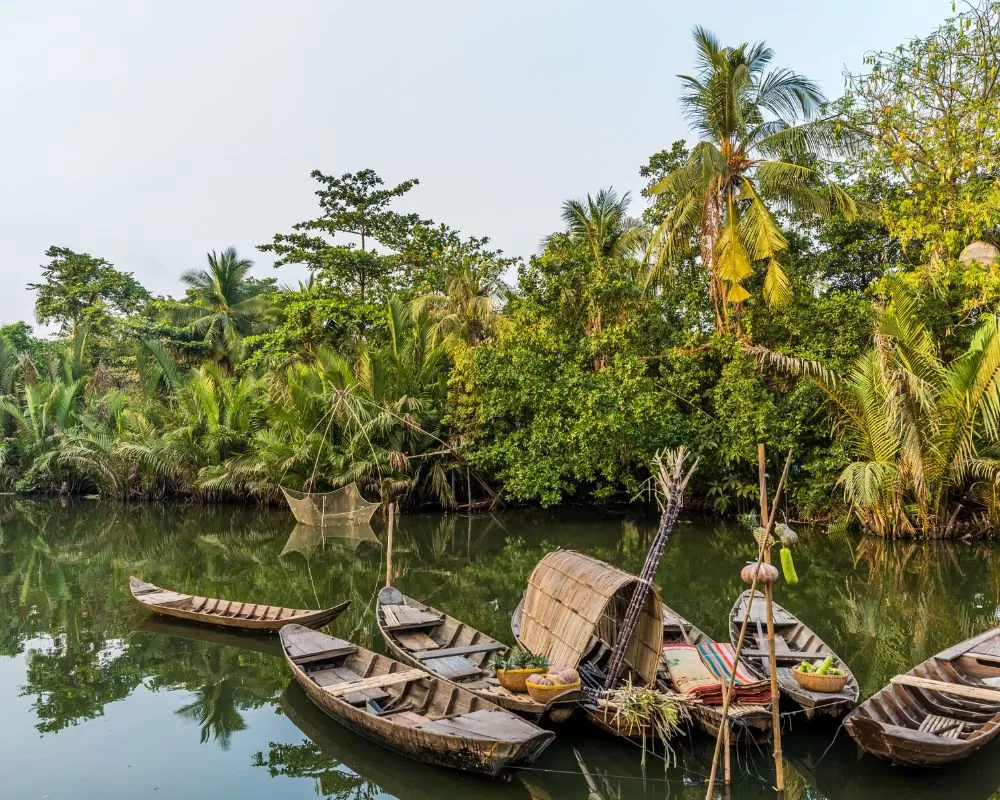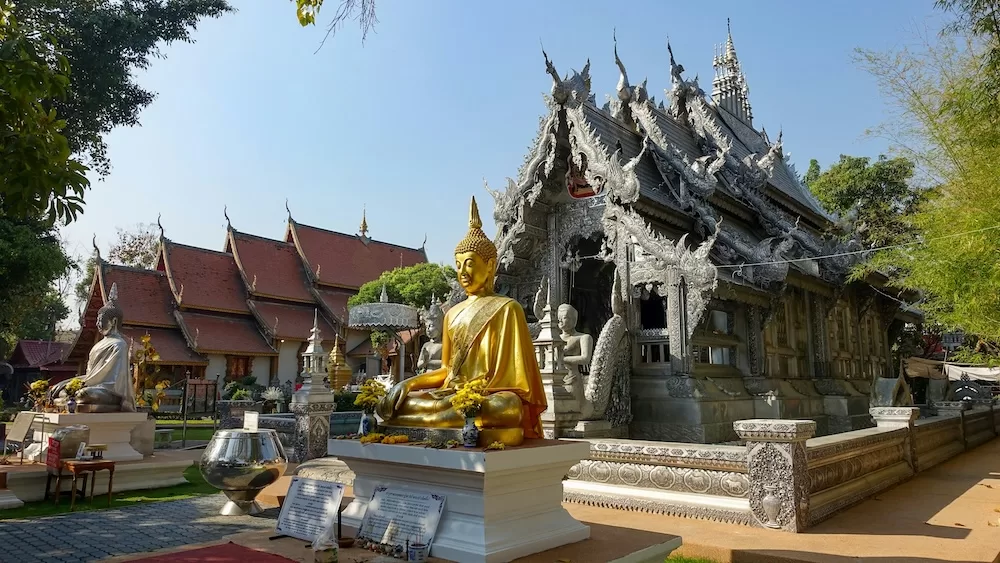
Vietnam – Ultimate Guide to Planning an Incredible Adventure
The Ultimate Vietnam Travel Guide
Travellers searching for paradise, adventure, relaxation and culture will often find themselves gravitating towards Southeast Asia. Vietnam is a gem for those seeking a unique and unforgettable experience. From the bustling streets of Hanoi to the stunning scenery of Ha Long Bay and the historical wonders of Hoi An, Vietnam offers a diverse landscape that caters to all.
Travel Guide for Vietnam
In this Vietnam travel planning guide, we take a deep dive into the practical aspects of planning an incredible trip to Vietnam. From everything you need to know about visas, health, insurance and flights to get you there. Plus, the must-visit destinations, hidden gems, and local insights that will help you make the most of your time in Vietnam. Vietnam has something for everyone, whether you’re into history, a foodie, an adventure seeker, or simply looking to immerse yourself in a different culture. For the perfect Vietnam itinerary for first-time visitors, don’t forget to check our post: 2 Week Vietnam Itinerary – From North to South.
Vietnam is a destination that will leave you spellbound with its rich history, delicious cuisine, and warm and welcoming people. We will provide you with practical tips on when to go, where to stay, what to eat, and how to get around. Get ready to embark on an adventure of a lifetime as we uncover the beauty and magic of Vietnam.
Best Time To Visit Vietnam
Due to its long narrow geography, Vietnam experiences a diverse climate. The best time to visit Vietnam largely depends on the region you plan to explore. Generally, the country can be divided into three main regions – North Vietnam, Central Vietnam and South Vietnam.

North Vietnam, which includes Hanoi and Ha Long Bay, has four distinct seasons. The best time to visit North Vietnam is during the spring and autumn months which are from March to April and September to November. You’ll find the weather is mild and pleasant. The summer months of May to August can be hot and humid, whilst the winter months of December to February can be chilly, especially in the mountainous areas.
In Central Vietnam, which includes popular destinations like Hoi An and Hue, the best time to visit Central Vietnam is from February to May when the weather is dry and temperatures are comfortable. The region is prone to typhoons and heavy rainfall from September to January, so it is advisable to avoid visiting during these months.


South Vietnam, including Ho Chi Minh City and the Mekong Delta, experiences a tropical climate with two distinct seasons. The dry season runs from December to April and the rainy season runs from May to November. The dry season is generally considered the best time to visit South Vietnam as the weather is hot and dry, perfect for exploring the cities and beaches.
No matter which region you choose to visit, it’s always a good idea to check the local weather forecasts and plan your trip accordingly.
Top Tourist Destinations in Vietnam
There are numerous breathtaking tourist destinations throughout the whole of Vietnam. Each offers a unique glimpse into the country’s rich history, stunning landscapes, and vibrant culture. Here are some of the must-visit places that should be on your itinerary:




1. Hanoi
The capital city of Vietnam, Hanoi, is a vibrant blend of ancient traditions and modern influences. The most stunning hodgepodge of a city that has everything from the remnants of French architecture mixed with Southeast Asian pagodas and temples. Silk scarves and handmade baskets are for sale on every corner, greenery pours out of every square inch of balcony and roof space, and the food is an adventure all on its own. Explore the narrow streets of the Old Quarter, visit the iconic Hoan Kiem Lake, and indulge in the delicious street food. For more on Hanoi read our Top 10 Things To Do In Hanoi.
2. Ha Long Bay
A UNESCO World Heritage Site, Ha Long Bay is famous for its emerald waters and limestone karsts. Situated within Quang Ninh province, in Northeast Vietnam, and approximately 160 km from the capital city of Hanoi, Halong Bay stands as a breathtaking natural wonder. Halong Bay has an intricate network of fabled islands, boasting over 1,969 islets scattered across its expansive waters. These phenomenal geological formations contribute to the enchanting scenery that defines Halong Bay. Take a cruise through the bay, explore the hidden caves, and enjoy the breathtaking views.
3. Hoi An
Known for its well-preserved ancient town, Hoi An is a charming destination that will transport you back in time. This ancient town is the primary reason that Hoi An is one of the best places to visit in Vietnam. The town features buildings dating back from the 15th century through to the 19th century and they are incredibly well preserved. The old houses and buildings are simply charming and extremely photogenic, painted in a yellow hue with wooden shutters and adorned with beautiful, colourful lanterns. Stroll through the lantern-lit streets, visit the Japanese Covered Bridge, and try your hand at traditional Vietnamese crafts.
4. Ho Chi Minh City
Formerly known as Saigon, Ho Chi Minh City is a bustling metropolis with a population of 12 million, it is the biggest city in Vietnam, offering a fascinating mix of history and modernity. Ho Chi Minh is an essential stop on any Vietnam itinerary. It’s full of history and was known as Saigon until the end of the Vietnamese/American War when it was renamed after the revolutionary leader, Ho Chi Minh. For that reason, the name is used interchangeably. Explore the Cu Chi Tunnels, visit the War Remnants Museum, and experience the lively nightlife. For more on Ho Chi Minh read our Top 12 Activities In Ho Chi Minh.
5. Hue
Captivating Hue is one of Vietnam’s most overlooked destinations. The former imperial capital of Vietnam, Hue is home to numerous historical sites and beautiful pagodas. A place full of imperial opulence, colonial relics, and picturesque landscapes, Hue sets the scene for a sensory-rich getaway. Visit the Imperial City, take a boat ride along the Perfume River, and taste the local speciality – Hue’s royal cuisine.
6. Sapa
Nestled in the mountains of northern Vietnam, Sapa is a paradise for nature lovers and trekking enthusiasts. Sapa gives you the sensation that you are standing at the edge of the world. As you look out over a sea of emerald green rice paddies cascading down into misty valleys, you feel a sense of exhilaration. You’ve made it to Sapa, one of Vietnam’s most breathtaking destinations. Explore the terraced rice fields, interact with ethnic minority groups, and take in the breathtaking views of the surrounding mountains.
These are just a few of the many incredible destinations that Vietnam has to offer. Each region has its own remarkable attractions, stunning scenery and unique charm, so make sure you plan your itinerary according to what you want to experience.
Planning Your Itinerary
When planning your Vietnam itinerary, the first step is to consider the length of your trip, your interests and which parts of the country you want to see. Vietnam offers a wide range of experiences, from bustling cities to serene countryside, so it’s essential to marry the destinations with the type of holiday you want to plan.
If you have limited time, rather focus on a specific region rather than trying to cover the entire country. If you’re interested in history and culture, spend your time exploring Hanoi, Hoi An, and Hue. If you’re looking for natural beauty and adventure, Ha Long Bay, Sapa, and the Mekong Delta are your go-to destinations. Read our Ultimate 2-Week Itinerary for the best places to visit.
It’s also worth considering your transportation options and the distances between destinations. Vietnam has a well-connected network of buses, trains, and domestic flights, making it relatively easy to travel between cities. However, keep in mind that travel times can be longer than expected should you consider travelling by road. This is due to traffic or road conditions, so it’s advisable to allow additional time for travelling between destinations.
To make the most of your trip and time, it’s a good idea to plan your itinerary. It’s not necessary to book accommodation in advance, however, some transportation tickets do require you to book ahead of time so that you can get the class of ticket you would like. This will ensure that you have a comfortable travel experience and avoid any last-minute hassles.
Remember to also leave some flexibility in your itinerary to allow for spontaneous adventures and extended stays. Some of the best experiences in Vietnam are often found off the beaten path, so be open to exploring beyond the popular tourist spots.
By carefully planning your itinerary, you can ensure that you make the most of your time in Vietnam and create memories that will last a lifetime. However, my biggest tip is to slow down and enjoy each and every stop. Vietnam is so enthralling it’ll pull you back for more. What you couldn’t fit in the first time … will simply be a reason to return!
The Best Ways To Get Around Vietnam
Vietnam offers a plethora of transportation options, not all are comfortable or quick, but they are an adventure and definitely a story to tell. Here are some of the popular modes of transportation:
- Domestic Flights: Vietnam has a well-developed domestic flight network, making it easy to travel between major cities. Airlines like Vietnam Airlines, Jetstar Pacific, and Vietjet Air offer regular flights at affordable prices. Domestic flights are particularly useful when covering long distances, such as from Hanoi to Ho Chi Minh City.
- Trains: Vietnam’s train system is an affordable and scenic way to travel between cities. The Reunification Express is the most popular train route, connecting Hanoi in the north to Ho Chi Minh City in the south. The trains offer different classes, including sleeper cabins for overnight journeys. It definitely pays to go for the best class of ticket you can afford, as you certainly get what you pay for.
- Buses: Buses are a common mode of transportation in Vietnam and are available for both short and long distances. They are relatively inexpensive and provide access to destinations that may not be served by trains or flights. However, be prepared for longer travel times and potentially crowded conditions, especially during peak tourist seasons. Many major tourist routes offer Sleeper Buses, however, it’s worth checking to see if the buses make regular toilet and break stops along the way.
- Motorbikes: Renting a motorbike is a popular option for exploring cities and rural areas in Vietnam. It offers flexibility and the opportunity to venture off the beaten path. However, it’s important to ensure you have the necessary driving skills and a valid international driver’s license. Be aware of traffic rules and exercise caution, especially in busy cities.
- Taxis and Ride-hailing Services: Taxis and ride-hailing services like Grab are widely available in major cities. They offer a convenient and comfortable way to get around, especially for shorter distances or when travelling with luggage. Be aware of taxi scams – read about how to avoid them in our Taxi Scam blog.
It’s important to note that traffic can be chaotic in Vietnam, particularly in cities like Hanoi and Ho Chi Minh City. Exercise caution and be aware of your surroundings when crossing the streets or riding a motorbike. Consider using local transportation apps for real-time information on routes and fares.
Visa requirements for Vietnam
The visa requirements vary depending on your nationality and the length of your stay. Here are the main visa options for visiting Vietnam:
- Visa Exemption: Citizens of certain countries are exempt from obtaining a visa for a specific duration of stay. For example, citizens of ASEAN countries, including Thailand, Malaysia, Singapore, and Indonesia, can enter Vietnam visa-free for up to 30 days. Citizens of South Korea, Japan, Russia, and many European countries can enter visa-free for up to 15 days. It’s important to check the latest regulations and ensure that your stay falls within the exemption period.
- Visa on Arrival: If you’re planning to stay in Vietnam for more than the visa-exempt period or if your nationality is not eligible for visa exemption, you can apply for a visa on arrival. This requires pre-arranging an approval letter through a reputable travel agency or online visa service. Once you arrive at one of the designated international airports, you will need to present the approval letter, pay the visa stamping fee, and obtain your visa at the immigration counter.
- E-Visa: Vietnam also offers e-visas for citizens of certain countries, allowing for a convenient online application process. The e-visa is valid for a single entry of up to 30 days and can be obtained through the official Vietnam Immigration website. The application requires a passport-sized photo and a scanned copy of your passport’s biographical page.
For peace of mind, It’s worth applying for your visa well in advance to avoid any last-minute complications. Check the official website of the Embassy of Vietnam or consult with a reputable travel agency for the most up-to-date information on visa requirements and procedures.
Remember to ensure that your passport has a validity of at least six months beyond your planned departure date from Vietnam. Keep a copy of your passport and visa documents in a safe place during your trip.
Currency And Money Tips
The official currency of Vietnam is the Vietnamese Dong (VND). Here are some currency and money tips to keep in mind when travelling in Vietnam:
- Currency Exchange: Whether you exchange your currency prior to leaving or upon arrival in Vietnam, the best thing to do is to shop around to get the best exchange from your local currency to Vietnamese Dong. Currency exchange counters can be found at international airports, major hotels, and banks. Be cautious of exchanging money at unauthorized or street vendors to avoid scams.
- Credit Cards and ATMs: Credit cards are widely accepted in major cities and tourist areas. However, it’s always a good idea to carry some cash for smaller shops and street vendors. ATMs are readily available in cities and towns, allowing you to withdraw Vietnamese Dong directly from your account. Inform your bank prior to travelling about the countries you will be visiting to ensure that your card is not blocked for suspicious transactions.
- Cash Payments: In many local markets, street food stalls, or small shops, cash is the preferred form of payment. Carry smaller denominations for easier transactions. Be cautious with larger bills and check for counterfeit notes to avoid any issues.
- Tipping: Tipping is not a common practice in Vietnam, especially in local restaurants or street food stalls. However, in upscale restaurants or for exceptional service, a small tip is appreciated. Check if a service charge is already included in the bill before deciding to tip.
- Bargaining: Bargaining is a common practice in local markets and street vendors. It’s acceptable to negotiate the price to a reasonable amount. Remember, this is someone’s livelihood, so maintain a friendly and respectful attitude and don’t bargain too low otherwise you’re disrespecting their craft and wares.
- Safety and Security: When carrying cash, use a money belt or a secure wallet to protect your valuables. Avoid displaying large amounts of money in public and be cautious of pickpockets in crowded areas. If walking around with a backpack, make sure you have concealed zips or even perhaps even consider a small padlock.
Accommodation Options In Vietnam
Vietnam offers a wide range of accommodation options to suit every budget and preference. From luxurious resorts to budget-friendly hostels, here are some popular choices:
- Hotels and Resorts: Vietnam is home to numerous international hotel chains and boutique resorts that offer luxurious accommodations and excellent amenities. These options are ideal for those seeking comfort, convenience, and a high level of service.
- Homestays: For a more immersive experience, consider staying at a homestay. Homestays allow you to live with a local family, experience their daily life, and gain insights into Vietnamese culture. This option is particularly popular in rural areas and ethnic minority villages.
- Guesthouses and Budget Hotels: Vietnam has a wide range of guesthouses and budget hotels that provide affordable accommodation without compromising on comfort. These options are ideal for backpackers looking for a little more comfort or budget-conscious travellers.
- Hostels: Hostels are a popular choice among backpackers and solo travellers looking for budget-friendly accommodation. They offer dormitory-style rooms, communal spaces, and opportunities to meet other like-minded travellers. Often you have the availability of a shared kitchen or food preparation area to prepare your own meals, should you be on a particularly tight budget.
- Beach Resorts: Vietnam’s beautiful coastline is dotted with stunning beach resorts. From luxurious beachfront villas to cosy bungalows, these resorts offer a tranquil escape with breathtaking views of the sea.
- Airbnb: Airbnb is becoming increasingly popular in Vietnam, offering a variety of accommodation options ranging from private rooms to entire apartments or villas. This option provides flexibility and the opportunity to stay in unique properties. Not only do you get your own space, but you also get the option of preparing food if you choose to not eat out for your whole trip.
Choosing accommodation can be difficult – There’s location to consider, amenities and reviews from previous guests. Do your research to find where the best area to stay in is and then look at all the accommodation options in that area. It’s best to book in advance, especially during peak tourist seasons, to secure your preferred choice. For insight on the best areas to stay in North Vietnam check out our Ultimate Guide to North Vietnam.
Remember to check the cancellation policies and any additional fees before making a reservation. It’s also a good idea to communicate with the host or hotel directly to clarify any questions or special requests.
Must-Try Vietnamese Dishes
Vietnamese cuisine is renowned for its bold flavours, fresh ingredients, and diverse culinary traditions. Here are some must-try dishes that will tantalize your taste buds:

Pho is Vietnam’s most famous dish, consisting of a flavorful broth, rice noodles, and various toppings such as beef or chicken, herbs, and bean sprouts. It’s a popular choice for breakfast or a comforting meal any time of the day.
Banh Mi is a Vietnamese-style sandwich that combines French influence. For the best places to try Banh Mi, read our Top 10 to do in Hanoi.

Essential Travel Toolkit
🚖 Rideshare Apps – The most complete guide to Rideshare, Ride-hailing and taxis in Southeast Asia.
🚞 12Go.com – The easiest way to book transport, public or private in Southeast Asia, Japan and Beyond.
🏨 Trip.com – Consistently great accommodation and hotel deals.
🛩️ Trip.com – Get the best flight deals.
🚙 Trip.com – Find your perfect rental car.
🗺️ Getyourguide.com – Looking for an amazing local guide or tour. Get Your Guide will have something for everyone.
🗺️ Viator.com – Easily book tours and experiences at the lowest rate. Amazing options all over the world.
👨💻 NordVPN.com – Reliable VPN service that is guaranteed to keep you and your data safe anywhere in the world.

Dan’s a windsurfing, adventure-seeking nomad with a passion for exploring the globe overland and an Engineer. Having grown up in the Middle East, he brings a unique perspective to Getting Lost Again, sharing his love for discovering hidden gems and embracing the unexpected. When he’s not on the road, he finds inspiration in windsurfing and other creative pursuits – and is equally at home under a vehicle solving problems as he is exploring a new place.


